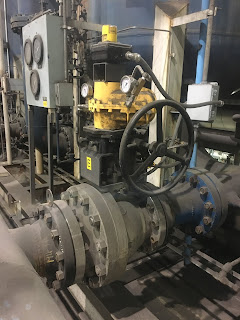Pneumatic actuators are vital components in many industrial processes, enabling the automation of valve and damper operations. The three most commonly used types of pneumatic actuators are vane, rack and pinion, and scotch yoke. This post provides an analysis of the technical design differences between these actuators, focusing on the advantages of Kinetrol vane actuators. We will also discuss why Kinetrol vane actuators last longer in industrial valve and damper applications, and how they provide a lower cost of ownership than other types of pneumatic actuators.
Design Differences Between Vane Actuators, Rack and Pinion Actuators, and Scotch Yoke Actuators
Kinetrol Pneumatic Vane Actuators
Kinetrol pneumatic vane actuators utilize a simple yet effective design consisting of a central shaft connected to a flat vane inside a semi-cylindrical housing. When pressurized air is applied to the housing, the vane rotates the central shaft, creating a rotary motion that operates the valve or damper.
Pneumatic Rack and Pinion Actuators
Pneumatic rack and pinion actuators consist of a piston connected to a rack, which engages with a pinion gear on the output shaft. As the piston moves linearly, the rack converts this motion into rotation through the pinion gear, driving the output shaft.
Scotch Yoke Actuators
Scotch yoke actuators employ a slotted yoke mechanism that translates linear motion from a piston into rotary motion. The piston rod has a pin that engages with the yoke, which in turn is connected to the output shaft. As the piston moves, the pin slides within the yoke slot, causing the yoke to rotate the output shaft.
Advantages of Kinetrol Pneumatic Vane Actuators
Simplicity and Compactness
Kinetrol vane actuators boast a simple design with fewer moving parts compared to rack and pinion or scotch yoke actuators. This simplicity results in a more compact and lightweight unit, which requires less space and is easier to install and maintain.
High Torque-to-Size Ratio
Kinetrol vane actuators have an exceptional torque-to-size ratio, providing more torque per unit size compared to other actuators. This enables Kinetrol actuators to deliver powerful performance even in space-constrained applications.
Less Friction and Wear
The design of Kinetrol vane actuators minimizes contact between moving parts, resulting in reduced friction and wear. This leads to a longer service life and lower maintenance requirements.
Smooth, Precise Control
Kinetrol actuators provide smooth and precise control of the valve or damper position, with minimal backlash or hysteresis. This ensures accurate and consistent process control, essential for maintaining product quality and efficient operations.
Longer Life in Industrial Valve and Damper Applications and Lower Cost of Ownership
Kinetrol vane actuators last significantly longer in industrial valve and damper applications due to their design, which minimizes friction and wear. Their simple construction and fewer moving parts result in reduced likelihood of component failure and increased resistance to harsh operating conditions. This translates into fewer breakdowns, less downtime, and lower maintenance costs.
The cost advantages of Kinetrol pneumatic vane actuators stem from their durability, ease of maintenance, and lower energy consumption. With fewer components to replace, lower maintenance requirements, and longer service.



















